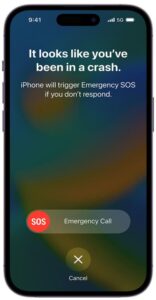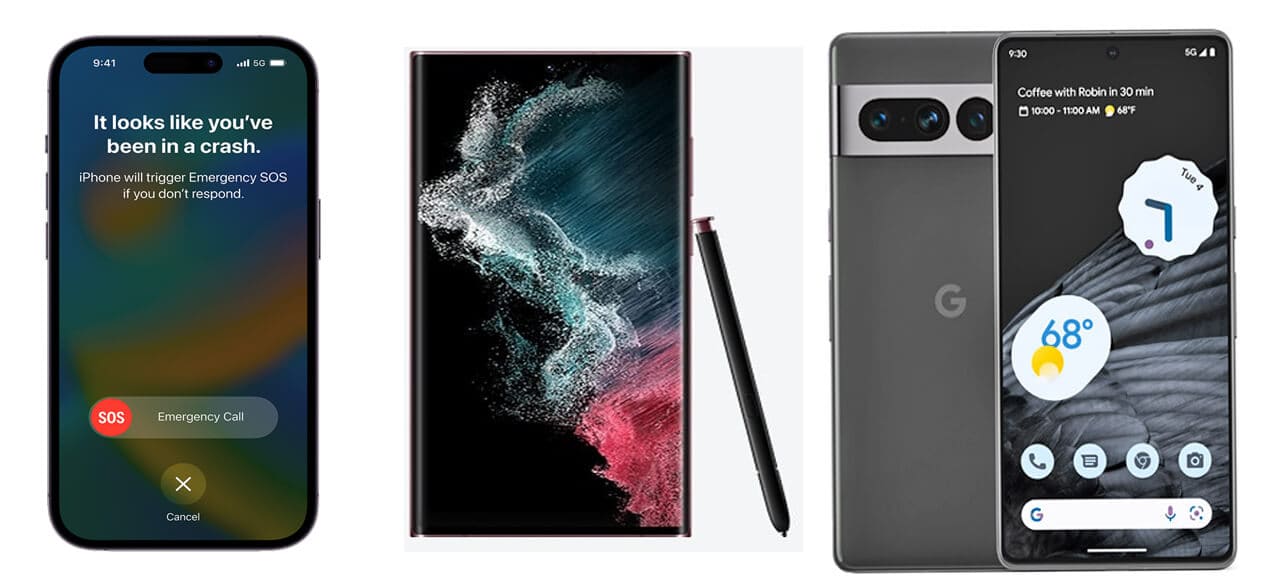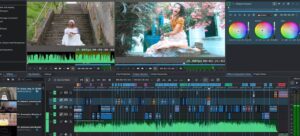Although there are different types of smartphones that are available now, I will discuss about probably 3 best smartphones in this articles.
Let’s see them in details.
What are the 3 best smartphones now?
Among different brands and types of smartphones, I am here to tell you 3 best smartphones and the reason behind becoming best of them.
1. Samsung Galaxy S22 Ultra
The Galaxy S22 Ultra from Samsung has some large challenges to overcome as the Note is not a Note, but it very well might wind up being the last Note.

The newest Ultra will either be the ideal phone, period or fall far short for either category in some manner as it tries to cater to both productivity-focused pen aficionados and photography fans.
To determine which one it is, we are here.
Display
Unquestionably one of the S22 Ultra’s best features and a major argument in favor of choosing it over other smartphones is its 6.8-inch Dynamic AMOLED display.
With a constant refresh rate, it provides a clear, vibrant, and detailed experience.
With a resolution of 3088 x 1440 (WQHD+), the screen has a pixel density of around 500ppi, which is much higher than Apple’s highest-end iPhone’s 2316 x 1080 (FHD+) display.
Before you get too enthusiastic, it’s important to note that the S22 Ultra ships with a lesser 2316 x 1080 (FHD+) resolution; you’ll need to manually adjust the setting.
That’s because, particularly while gaming, the high resolution may seriously drain the battery. The good news is that the display still appears sharp and clear at FHD+ resolution.
One energy-saving feature is the variable refresh rate, which can be switched between 1- and 120Hz and not only makes applications and games appear and feel fluid but also allows for less battery use than a regular 120Hz display without significantly affecting performance.
The S22 Ultra has one of the brightest smartphone screens on the current market, making it simple to use outdoors, even in intense sunshine.
According to Samsung, the basic setting can produce up to 1250 nits, while the increased brightness option, which is best for outdoor usage, can produce up to 1750 nits.
Cameras
The S22 Ultra is equipped with the same 108Mp primary wide lens, a 120-degree ultrawide lens with 12Mp resolution, twin telephoto lenses with 3x and 10x optical zoom on the back (the latter of which can be extended to 100x), and a 40Mp selfie camera on the front.
The primary 108Mp camera’s impressively larger 2.4-m pixels are one of the few hardware upgrades worth mentioning.
This results in much better low-light photography with more detail, light, and harmonious contrast when combined with the f/1.8 aperture.
For starters, the S22 Ultra significantly enhances the Super Steady System, which works with the 100x space zoom and helps prevent camera shake while taking pictures of very close-up subjects.
Performance
The Galaxy S22 series keeps the same split between chipset configurations that have been the subject of scholarly debate for years on end – devices in certain areas have a Snapdragon SoC, while others are outfitted with an in-house Exynos.
However, it seems that things have changed this year, with the most significant change being the switch from Exynos to Snapdragon for the Indian market.
As is customary, the Samsung chip is inside the device we are reviewing.
Both the Snapdragon 8 Gen 1 and the Exynos 2200 use octa-core CPUs with the same basic 1+3+4 core arrangement and are produced using a 4nm manufacturing process.
With only slight variations in the clock rate limitations, you would get one Cortex-X2 prime core, three Cortex-A710 cores, and four Cortex-A510 cores in each scenario.
Both chipsets provide cutting-edge connection choices, such as integrated dual-band GPS, Wi-Fi 6e, and 5G modems.
Both chips’ most recent AI engines promise difficult-to-measure AI advancements, however, Qualcomm claims this one is 4x quicker than their prior one while Samsung only makes a 2x claim.
The memory choices are simpler to understand and range from the basic (and much too basic, we may add) 8GB of RAM and 128GB of storage to the more advanced 12GB of RAM and 1TB of storage, with some sources indicating that there is even a 16GB RAM version.
S Pen
While the Galaxy S21 Ultra from the previous year supported the S Pen stylus, the S22 Ultra completes the shift to Note-but-Not-Note by supporting an integrated S Pen.
If you adore the Note 20’s experience, the Galaxy S22 Ultra is technically its replacement.
The pen is a delight to use, despite being a touch tiny for this reviewer’s hands. This is mostly due to Samsung’s magic latency reduction, which on the S22 Ultra decreased latency from 9ms to an astounding 2.8ms.
While writing text, this equates to an almost instantaneous reaction, giving PenUP users a more authentic pen-to-paper experience when taking notes on the move and doodling, particularly when accompanied by Samsung’s scribbling sound effects.
Not everyone will use the additional capability provided by the built-in S-Pen to its full potential, but many users will find it appealing to be able to use a high-quality pen anytime they want, particularly with an experience as lifelike as the Stylus Pen.
2. Apple iPhone 14 Pro Max
The iPhone 14 Pro Max is the finest iPhone ever, version 2022, size XL. The notch changing into a device, the debut of an Always-On display, and a brand-new main camera are this year’s innovations.

While the 14 Pro offers all of these features, Max’s larger screen and longer battery life, combined with its status as the “ultimate” model, give it a distinct market advantage.
Display
Apple has long been known for producing screens that are among the best in the industry, notably for its iPhone models. The 14 Pro Max is no exception.
The Super Retina XDR OLED display boasts a 19.5:9 aspect ratio, a 6.7-inch diagonal (the small print states 6.69″), and a 460ppi pixel density thanks to its 1290x2796px resolution.
The DolbyVision and HDR10 standards are also supported.
As a ProMotion panel, it can dynamically vary its maximum refresh rate from 120Hz to as low as 1Hz for the recently launched Always-On display function, depending on the use case.
When it comes to brightness, the 14 Pros are at the top. According to Apple, the Pro Max’s display should be able to shine as brightly as 2000nits outside but just 1000nits should be visible in less harsh settings.
The HDR application peak is said to be 1600 nits.
Camera
The iPhone 14 Pro Max’s main camera has seen the most changes. This is the first iPhone to employ a 48MP 1/1.28″ sensor with a Quad-Bayer color filter.
Before binning, the camera’s pixels were 1.22 mm; after binning, they were 2.44 mm. With it is a 24mm f/1.78 lens. Additionally, full-focus pixels and second-generation sensor-shift stabilization are available.
By cutting from the center and using AI-assisted upscaling, the high-resolution primary sensor allows the camera app to introduce a new intermediate zooming step of 2x.
In addition to the regular 12MP RAW mode, high-res 48MP RAW photography is also an option.
The ultrawide camera also has a new 12MP sensor. Its 1/2.55″ sensor and massive 1.4 m pixels should provide photographs with more sharpness and detail, as well as enhance macro photography.
The lens now has an f/2.2 aperture and a focal length similar to 14mm. For this camera, dual-pixel PDAF is available.
The telephoto camera is still equipped with the same 12MP 1/3.5″ imager and 77mm f/2.8 OIS lens, which gives it a 3x optical zoom advantage over the primary camera.
Again using a 12MP 1/3.6″ sensor, the selfie camera now has a brighter f/1.9 aperture on its 23mm lens and enables autofocus.
There is also OIS, which Apple did not announce during the presentation but which has since been discovered in several breakdown videos.
One has to question why Apple didn’t make a huge deal out of this as it has to be a first for a selfie camera, at least in western countries.
Each camera can capture video in up to 4K resolution at 60 frames per second with cinematic stabilization and expanded dynamic range.
On all cameras and in all shooting modes, Dolby Vision HDR capture is possible. The Cinematic Mode now supports up to 4K HDR recording at 30fps and is compatible with the main, telephoto, and selfie cameras.
Performance
The new iPhone 14 Pro smartphones are powered by the Apple A16 Bionic processor. With 16 billion transistors, increased from the A15 chip’s 15 billion, it is produced using the TSMC 4nm production node.
There are two performance Everest cores running at 3.46GHz and four efficiencies Saw tooth cores operating at 2.02GHz, giving it the well-known six-core CPU design.
The CPU’s two highly effective cores use 20% less power than those in the A15, and it is said to be 40% quicker overall than the competition.
A 50% increase in memory bandwidth is provided by the upgraded 5-core Apple GPU. The 16-core Neural Engine that the A16 utilizes can do 17 trillion operations per second.
The Qualcomm X65 5G modem is what the A16 utilizes for cellular communications.
With much more sophisticated computation photography capabilities and up to 4 million operations for each high-resolution shot produced, the ISP has also made some progress.
The Always on Display was made feasible by a new Display Engine, a specific feature that was created by optimizing the display’s attributes to save battery life (1Hz refresh rate, brightness, color settings).
Additionally, it enabled greater peak brightness of up to 2,000 nits. Another significant responsibility for the Display Engine is the antialiasing work surrounding Dynamic Island.
Of course, conventional hardware might have completed any of the aforementioned tasks.
However, having the Engine operate separately from the other components, including the GPU, allowed for far better resource allocation and significantly reduced battery use.
Although 6GB of RAM is still used in the iPhone 14 Pro and Pro Max, LPDDR5 delivers 50% more bandwidth than A15.
Battery power
The battery inside the iPhone 14 Pro Max is 4,323mAh, which is the same as last year’s model but down 29mAh. This is around 35% more than the 14 Pro non-Max and has the same capacity as the 14 Plus.
Comparing battery sizes across different Android smartphones is often useless, although the Galaxy S22 Ultra’s cell is listed at 5,000mAh for some context.
In our tests, the iPhone 14 Pro Max performed usually better with the screen on than its predecessor.
Three and a half hours longer than the 13 Pro Max, we measured 23:39 hours of Wi-Fi web surfing and 24:38 hours of offline video playing (a less significant 30-ish minutes increase).
While standby performance somewhat declined, we timed almost equal call lifetime this year at 27:23h (27:26h on the 13 Pro Max). All of them add up to a total endurance rating of 121 hours.
3. Google Pixel 7 Pro
Google iterates on the major redesign of the Pixel 6 Pro with the Pixel 7 Pro by enhancing battery life, display, and cameras.
![]()
The 7 Pro is the greatest Pixel to yet and a true “kitchen sink” gadget; it’s huge and hefty, and the design may not be to everyone’s taste, but it provides an incredible Android experience.
The Pixel 7 Pro is the greatest phone option if you don’t like iOS and don’t want the S-Pen of the S22 Ultra, plus it’s less expensive than the two phones listed above it in our list.
With Google’s better software processing, it produces amazing still images that are among the finest and most consistent of any phone, making it one of the most pleasant point-and-shoot cameras you can carry about.
Display
The 6.7-inch OLED display on the Pixel 7 Pro has all the features you would expect from a high-end phone. It has a 512ppi pixel density and a resolution of 1440×3120 pixels in a 19.5:9 aspect ratio.
Depending on the use case, the LTPO panel should be able to ramp down to 10Hz from a maximum refresh rate of 120Hz.
Google promises a full-screen brightness of 1000 nits and a peak brightness of 1500 nits for a 5% lit area.
We measured 1090nits with the Adaptive brightness turned on during our regular testing (illuminating a 75% region of the screen), and 588nits while changing the brightness manually.
When it comes to peak brightness, the Galaxy S22s and particularly the iPhone 14 Pros stand out as a bit of an oddity, but the Pixel 7 Pro’s stats are more than deserving of its position as a flagship device.
By the way, just for fun, we tested the display with a 10% white patch, and the result was 1462 nits, virtually correlating with Google’s 1500 nit claim.
Camera
The Samsung GN1 sensor, with a 1/1.31″ optical format and a 4-to-1 conversion ratio to reduce its nominal 50MP resolution to 12.5MP pictures, is most likely the main camera.
The lens’s 82-degree field of vision, as specified by Google, roughly equates to a 25mm equivalent focal length, although the EXIF data indicates 24mm, and the crop factor of the sensor also indicates that. It has a stabilized lens.
Because numbers are no longer important, the ultrawide camera continues to generate 12.5MP photos with the same sensor specifications as its predecessor: 12MP, 1.25mm pixel pitch (thus 1/2.9″ optical format).
Though you won’t see the whole field of vision after distortion correction takes effect, the lens has a larger field of view this time (125.8° versus 114° on the Pixel 6 Pro).
The most significant change here is the addition of focusing, which not only makes it possible to use the new macro mode but also simply allows you to take a broader range of pictures.
The telephoto lens is brand-new. It replaces the 1/2″ imager from the previous year’s model with a 48MP 1/2.55″ sensor with 0.7m pixels, and this one is almost probably the Samsung GM5.
Again, despite what math would have you believe, the final images are 12.5MP.
With this lens, you can zoom in five times for an EXIF-reported equivalent focal length of 117mm (Google says 20.6 degrees of field of view which should be 119mm). This lens has an f/3.5 aperture and is also stabilized.
The selfie camera is now listed as having a 10.8MP sensor and a 92.8° field of view, which sounds quite similar to the former 11.1MP sensor and 94° field of view unit that has been slightly reduced.
You would, however, get 10MP selfies since, as we’ve previously demonstrated, all of the numbers are fictitious. We would claim that the f/2.2 aperture lens’s absence of autofocus is no longer acceptable.
Performance
The second-generation in-house Tensor chip, which powers the Google Pixel 7 series, was developed by Google’s engineering team and specifically for the Pixel.
It was created in collaboration with Samsung and is produced at Samsung’s facility that makes 5nm 5LPE chips.
The Tensor G2’s CPU has the same basic architecture as its predecessor (2+2+4 layout), which is still quite rare in the market.
New mid-tier cores, Cortex A78 instead of A76, and cores clocked at 2.35GHz rather than 2.25GHz are among the modifications for this year.
The speed of the high-performance X1 cores has been slightly increased from 2.80GHz to 2.85GHz. The 4xCortex-A55 at 1.8GHz quad-core efficiency-focused cluster is still in use.
Battery life
The Pixel 7 Pro’s battery is rated as 5,000mAh, which, if you’re obsessive about details, you could perceive to be a drop from the 5,003mAh capacity of the Pixel 6 Pro.
The iPhone 14 Pro Max has a battery capacity of 4,323 mAh, whereas other large, high-end Android devices like the Galaxy S22 Ultra and the OnePlus 10 Pro have 5,000mAh batteries.
A full day of phone conversations, 12:38 hours of Wi-Fi web surfing (at a configurable 120–60 Hz frame rate), or 17:14 hours of video playing were all possible on the Pixel 7 Pro during our tests (at a reported constant 60Hz refresh rate).
The Pixel’s total Endurance rating was 83h after we factored in standby data that came out to be typical for the class.
Recommended articles:
How to keep smartphone battery healthy?
Best video editing software for all platforms
How to speed up your computer in 20 easiest way
Types of personal computer | what are 6 best types of PCs
Main 4 Functions Of A Computer
Different computer peripherals with details of them
4 Easiest Ways to Watch YouTube Without Ads




